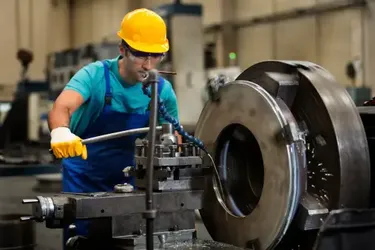What are the 5 Major Parts of the Lathe Machine?
Lathes are fundamental tools in machining, enabling precise shaping of materials like metal, wood, and plastic. Whether you're a seasoned machinist or just starting, understanding the core components of a lathe machine is crucial for mastering its use. In this blog, we’ll explore the five major parts of the lathe machine and their functions, shedding light on how they work together to achieve remarkable results.
1. Bed
The bed of a lathe is its backbone, providing a sturdy foundation for all other parts. Typically made from cast iron or steel, it ensures stability and reduces vibrations during operation. The bed is designed to support the carriage and tailstock, and its precision is vital for achieving accurate work. Think of it as the platform that keeps everything in alignment, allowing for smooth and consistent machining.
2. Headstock
The headstock is the control center of the lathe. Located at one end of the bed, it houses the spindle, which is driven by a motor. The spindle rotates the workpiece, and the headstock controls its speed and direction. It also includes the gear train, which allows for different spindle speeds. This part is essential for turning operations, where the workpiece needs to be spun at varying speeds to achieve the desired shape.
3. Tailstock
Opposite the headstock, the tailstock supports the other end of the workpiece. It can be adjusted along the bed to accommodate different lengths of material. The tailstock can also hold additional tools, such as drills or tapers, for various machining tasks. By providing support and stability, the tailstock ensures that the workpiece remains centered and secure during operations.
4. Carriage
The carriage is responsible for moving the cutting tool across the workpiece. It consists of several components, including the cross slide, compound rest, and tool post. The carriage can move longitudinally (along the bed) and transversely (across the bed) to adjust the tool's position. This movement allows for precise cuts and detailed work, making it a key player in achieving intricate designs and dimensions.
5. Tool Post
Mounted on the carriage, the tool post holds the cutting tool in place. It can be adjusted to change the tool’s angle and position relative to the workpiece. The tool post enables precise control over the cutting depth and direction, allowing machinists to perform various operations, from simple turning to complex threading. A well-maintained tool post ensures smooth and accurate cuts, which are essential for high-quality results.
Putting It All Together
Each of these parts plays a vital role in the lathe machine’s operation. The bed provides the necessary stability, the headstock drives the spindle, the tailstock supports the workpiece, the carriage moves the cutting tool, and the tool post holds and adjusts the tool. Understanding how these components work together helps machinists make the most of their lathe, achieving precision and efficiency in their projects.
In addition to these main components, modern lathes may include additional features like digital readouts, automatic feed mechanisms, and enhanced control systems. These advancements further improve the lathe’s capabilities, making it an even more versatile tool for various machining tasks.
By grasping the functions and interconnections of the lathe’s major parts, you’ll be better equipped to use this machine effectively. Whether you’re crafting custom parts, creating intricate designs, or simply honing your skills, a solid understanding of the lathe machine’s components will enhance your machining experience.




